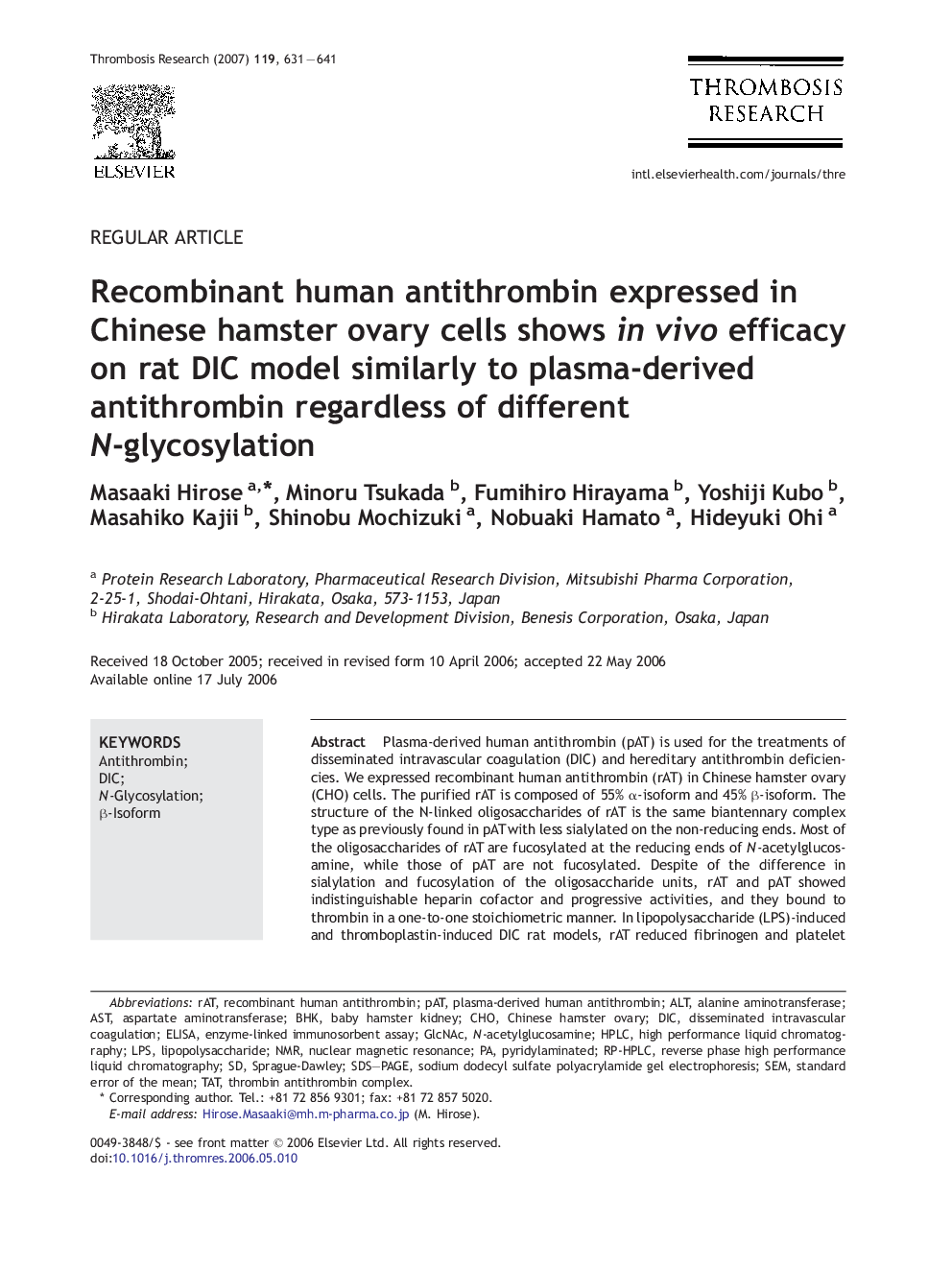| Article ID | Journal | Published Year | Pages | File Type |
|---|---|---|---|---|
| 3029922 | Thrombosis Research | 2007 | 11 Pages |
Plasma-derived human antithrombin (pAT) is used for the treatments of disseminated intravascular coagulation (DIC) and hereditary antithrombin deficiencies. We expressed recombinant human antithrombin (rAT) in Chinese hamster ovary (CHO) cells. The purified rAT is composed of 55% α-isoform and 45% β-isoform. The structure of the N-linked oligosaccharides of rAT is the same biantennary complex type as previously found in pAT with less sialylated on the non-reducing ends. Most of the oligosaccharides of rAT are fucosylated at the reducing ends of N-acetylglucosamine, while those of pAT are not fucosylated. Despite of the difference in sialylation and fucosylation of the oligosaccharide units, rAT and pAT showed indistinguishable heparin cofactor and progressive activities, and they bound to thrombin in a one-to-one stoichiometric manner. In lipopolysaccharide (LPS)-induced and thromboplastin-induced DIC rat models, rAT reduced fibrinogen and platelet consumption to a similar extent with pAT. In LPS-induced DIC model, both ATs similarly restrained the increase of alanine aminotransferase and aspartate aminotransferase activities. Finally, pharmacokinetic analysis showed that both ATs had similar half-lives in the circulation of normal rats. Together, the present study demonstrated that rAT prepared in CHO cells has potential for a substitute of pAT in therapeutic use.
